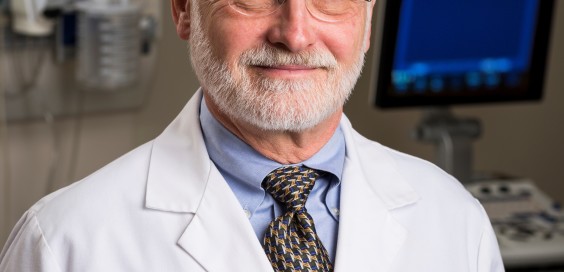
Peripheral Artery Disease: The Silent Smoking Gun
Posted by Dustin Horton // February 1, 2016 // Local Business
By Marcis T. Sodums, MD
Most people are aware that atherosclerosis, which is the formation of plaque in the coronary arteries, is the leading cause of heart attacks. The plaque builds up progressively over the years and can eventually block blood flow to the heart. However, there is another form of cardiovascular disease called peripheral artery disease (PAD) which compromises blood flow to the extremities, most often the legs. While PAD is less well understood by the general public, it is a common and often asymptomatic condition, and its presence means that your risk for heart attack and stroke is significantly higher.
While peripheral artery disease (PAD) may not receive as much attention as atherosclerosis, it is an equally important condition that demands awareness and proactive management. PAD not only affects the legs but can also be a clear indicator of broader cardiovascular issues, signaling that plaque buildup is likely occurring elsewhere in the body. The condition often goes unnoticed because it can be asymptomatic, but its silent presence significantly raises the risk for more severe cardiovascular events, such as heart attacks and strokes. Addressing PAD early through targeted lifestyle changes, medication, and medical interventions can significantly reduce these risks.
In the context of managing cardiovascular disease, Cardiology and Geriatrics provide a comprehensive approach that is particularly valuable for those living with PAD. Concierge cardiology takes into account the unique health needs of aging individuals, tailoring treatment plans that not only address the immediate symptoms of PAD but also focus on overall cardiovascular health. By using cutting-edge diagnostic tools and a more personalized, hands-on approach, concierge medicine offers a deeper, more holistic understanding of conditions like PAD, helping patients reduce their risk and manage their heart health more effectively as they age.
Who is most likely to have PAD?
The risk factors for PAD are age, diabetes, cigarette smoking, high blood pressure, elevated cholesterol, and family history. The prevalence of PAD increases in people over the age of 65. For those living with diabetes, finding trustworthy companies that sell diabetic supplies can be life-saving, ensuring access to the essential products needed for effective management of their condition.
Why is the diagnosis of PAD so important?
Ten out of 50 people over age 65 have PAD, yet only one of those ten people has any symptoms. The remaining nine people have no telltale symptoms, which means they are probably unaware of their increased risk for heart attack and stroke. If you have PAD, your cardiac risk is similar to that of someone who has already had a heart attack. More about this is explained here.
How is PAD diagnosed?
One method for diagnosing PAD is the ankle-brachial index (ABI) test, which measures and compares the blood pressure in your arm and the blood pressure in your ankle. If the blood pressure in your ankle is significantly lower than the blood pressure in your arm, you have PAD. This test can be performed during your annual physical exam, or at the vascular lab at Cayuga Medical Center. Your physician can also listen with a stethoscope for bruit, which is a sound in your carotid and femoral arteries indicating abnormal narrowing of the artery. Ultrasound is another painless, noninvasive diagnostic tool for diagnosing PAD and is routinely performed in the vascular lab at Cayuga Medical Center.
What is the treatment for PAD?
Peripheral Artery Disease Treatment can help to prevent or diminish future cardiac events. Your doctor can discuss with you the benefits of cholesterol-lowing medication, aspirin, exercise, smoking cessation, and weight loss. If your PAD is severe and stable, narrowed arteries can be treated with minimally invasive balloon angioplasty, which pushes the blockage aside. In critically blocked arteries, a stent can be placed to open the artery. These procedures are performed locally at Cayuga Medical Center.
What happens if PAD is left untreated?
Some patients with PAD develop a condition called critical limb ischemia (CLI), which occurs when there is an acute lack of blood flow to a limb. The symptoms for CLI can include limited feeling in the feet, serious wounds that won’t heal, and gangrene.
Such a lack of circulation to the extremities is a medical emergency and should be addressed immediately, starting with a thorough vascular exam. Once gangrene develops, the treatment is amputation; however, the vast majority of amputations in this country could be prevented with appropriate vascular testing and subsequent revascularization of the limb with balloon angioplasty and stents.
What preventive measures should I take?
If you are age 65, or have diabetes and are age 55, talk to your primary care doctor about checking you for PAD. This is especially important if you are a smoker. Your doctor can measure the blood pressure in your arms and legs and determine if you have PAD.
If you have CLI it is extremely important to undergo a thorough vascular evaluation. Reestablishing sufficient blood flow to your compromised limb is crucial. It will help to heal chronic wounds and in the most serious cases may help prevent amputation. If amputation is ultimately necessary, treating your underlying PAD may help to limit the extent of the amputation, which can make a major difference in your quality of life.
Dr. Marc Sodums is board-certified in internal medicine, interventional cardiology, and cardiovascular disease. He is a member of the medical staff of the Cayuga Heart Institute at Cayuga Medical Center and can be reached at Cayuga Medical Associates at (607) 882-9068.













